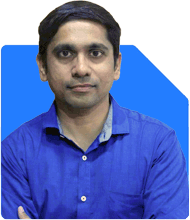Ramalingam Kalirajan |10872 Answers |Ask -Follow
Mutual Funds, Financial Planning Expert - Answered on Jun 04, 2024
He has an MBA in finance from the University of Madras and is a certified financial planner.
He is the director and chief financial planner at Holistic Investment, a Chennai-based firm that offers financial planning and wealth management advice.... more

I want to invent 2k every month in sip for 20 years and stepup 10% every year. Which mf is better for investment?
Investing Rs. 2,000 every month through a SIP is a smart move.
Stepping up by 10% each year enhances your investment growth.
This disciplined approach helps in long-term wealth creation.
Benefits of SIP and Step-Up Approach
Power of Compounding:
SIP leverages the power of compounding over time.
Regular investments grow exponentially due to reinvested earnings.
Rupee Cost Averaging:
SIP allows buying more units when prices are low and fewer units when prices are high.
This averaging reduces the impact of market volatility.
Discipline and Consistency:
SIP instills a disciplined savings habit.
Automated investments ensure consistency and prevent emotional decision-making.
Step-Up SIP:
Increasing SIP amount by 10% annually boosts your corpus significantly.
It aligns with increasing income and inflation, enhancing long-term returns.
Choosing the Right Mutual Fund
Selecting the right mutual fund is crucial for achieving your financial goals.
Here are some categories to consider:
1. Equity Funds:
Equity funds invest in stocks, offering higher returns but with higher risk.
Suitable for long-term goals, they can significantly grow your corpus.
2. Hybrid Funds:
Hybrid funds invest in both equities and debt instruments.
They offer a balanced approach with moderate risk and returns.
3. Debt Funds:
Debt funds invest in fixed-income securities like bonds.
They are less risky but offer lower returns compared to equity funds.
Evaluating Fund Performance
When choosing a mutual fund, consider the following factors:
Fund Performance:
Check the historical performance of the fund.
Consistent performance over 5-10 years indicates a reliable fund.
Fund Manager's Track Record:
A good fund manager can significantly impact the fund's performance.
Look for experienced managers with a strong track record.
Expense Ratio:
Lower expense ratios mean higher net returns for investors.
Compare the expense ratios of similar funds before investing.
Fund's Portfolio:
Understand the fund's portfolio composition.
A well-diversified portfolio reduces risk and enhances stability.
Suggested Categories for Long-Term Investment
Large Cap Funds:
Large cap funds invest in blue-chip companies with stable performance.
They offer steady growth with relatively lower risk.
Multi Cap Funds:
Multi cap funds invest across large, mid, and small-cap stocks.
This diversification balances risk and potential returns.
ELSS (Equity Linked Savings Scheme):
ELSS funds offer tax benefits under Section 80C.
They have a lock-in period of 3 years and invest primarily in equities.
Advantages of Actively Managed Funds
Expert Management:
Actively managed funds benefit from the expertise of fund managers.
Managers make informed decisions to maximize returns and manage risks.
Flexibility:
Managers can adjust the portfolio based on market conditions.
This flexibility can help in navigating market volatility effectively.
Disadvantages of Index Funds
Passive Management:
Index funds replicate market indices and do not actively manage investments.
They lack the flexibility to adapt to market changes.
Limited Growth Potential:
Index funds may miss out on opportunities to outperform the market.
Actively managed funds can potentially deliver higher returns.
Building an Emergency Corpus
In addition to long-term investments, an emergency fund is crucial.
It should cover 6-12 months of living expenses and be easily accessible.
Liquid Funds:
These funds offer high liquidity and low risk.
They are suitable for building an emergency corpus.
Ultra-Short-Term Debt Funds:
These funds provide slightly higher returns than liquid funds.
They are also suitable for short-term financial needs.
Regular Monitoring and Review
Regularly review your investment portfolio to ensure it aligns with your goals.
Make adjustments based on performance and changing financial situations.
Consulting a Certified Financial Planner
A Certified Financial Planner (CFP) can provide personalized advice.
They can help tailor your investment strategy to meet your specific goals.
Conclusion
Investing Rs. 2,000 monthly in SIPs with a 10% annual step-up is a smart strategy.
Consider large cap, multi cap, and ELSS funds for long-term growth.
Consult a CFP for personalized guidance and regular portfolio reviews.
Best Regards,
K. Ramalingam, MBA, CFP,
Chief Financial Planner,
www.holisticinvestment.in
You may like to see similar questions and answers below
Hemant Bokil | Answer |Ask -Follow
Financial Planner - Answered on Jan 16, 2024
Ramalingam Kalirajan |10872 Answers |Ask -Follow
Mutual Funds, Financial Planning Expert - Answered on May 21, 2024
Ramalingam Kalirajan |10872 Answers |Ask -Follow
Mutual Funds, Financial Planning Expert - Answered on Jul 27, 2024
Ramalingam Kalirajan |10872 Answers |Ask -Follow
Mutual Funds, Financial Planning Expert - Answered on Oct 24, 2024
Ramalingam Kalirajan |10872 Answers |Ask -Follow
Mutual Funds, Financial Planning Expert - Answered on Dec 23, 2024
Radheshyam Zanwar |6735 Answers |Ask -Follow
MHT-CET, IIT-JEE, NEET-UG Expert - Answered on Dec 06, 2025
Dr Nagarajan J S K |2576 Answers |Ask -Follow
NEET, Medical, Pharmacy Careers - Answered on Dec 06, 2025
Mihir Tanna |1090 Answers |Ask -Follow
Tax Expert - Answered on Dec 06, 2025
Ramalingam Kalirajan |10872 Answers |Ask -Follow
Mutual Funds, Financial Planning Expert - Answered on Dec 06, 2025
Radheshyam Zanwar |6735 Answers |Ask -Follow
MHT-CET, IIT-JEE, NEET-UG Expert - Answered on Dec 06, 2025
Radheshyam Zanwar |6735 Answers |Ask -Follow
MHT-CET, IIT-JEE, NEET-UG Expert - Answered on Dec 06, 2025
Radheshyam Zanwar |6735 Answers |Ask -Follow
MHT-CET, IIT-JEE, NEET-UG Expert - Answered on Dec 06, 2025
Dr Dipankar Dutta |1837 Answers |Ask -Follow
Tech Careers and Skill Development Expert - Answered on Dec 05, 2025
Dr Shyam Jamalabad |108 Answers |Ask -Follow
Dentist - Answered on Dec 05, 2025
Dr Shyam Jamalabad |108 Answers |Ask -Follow
Dentist - Answered on Dec 05, 2025


























